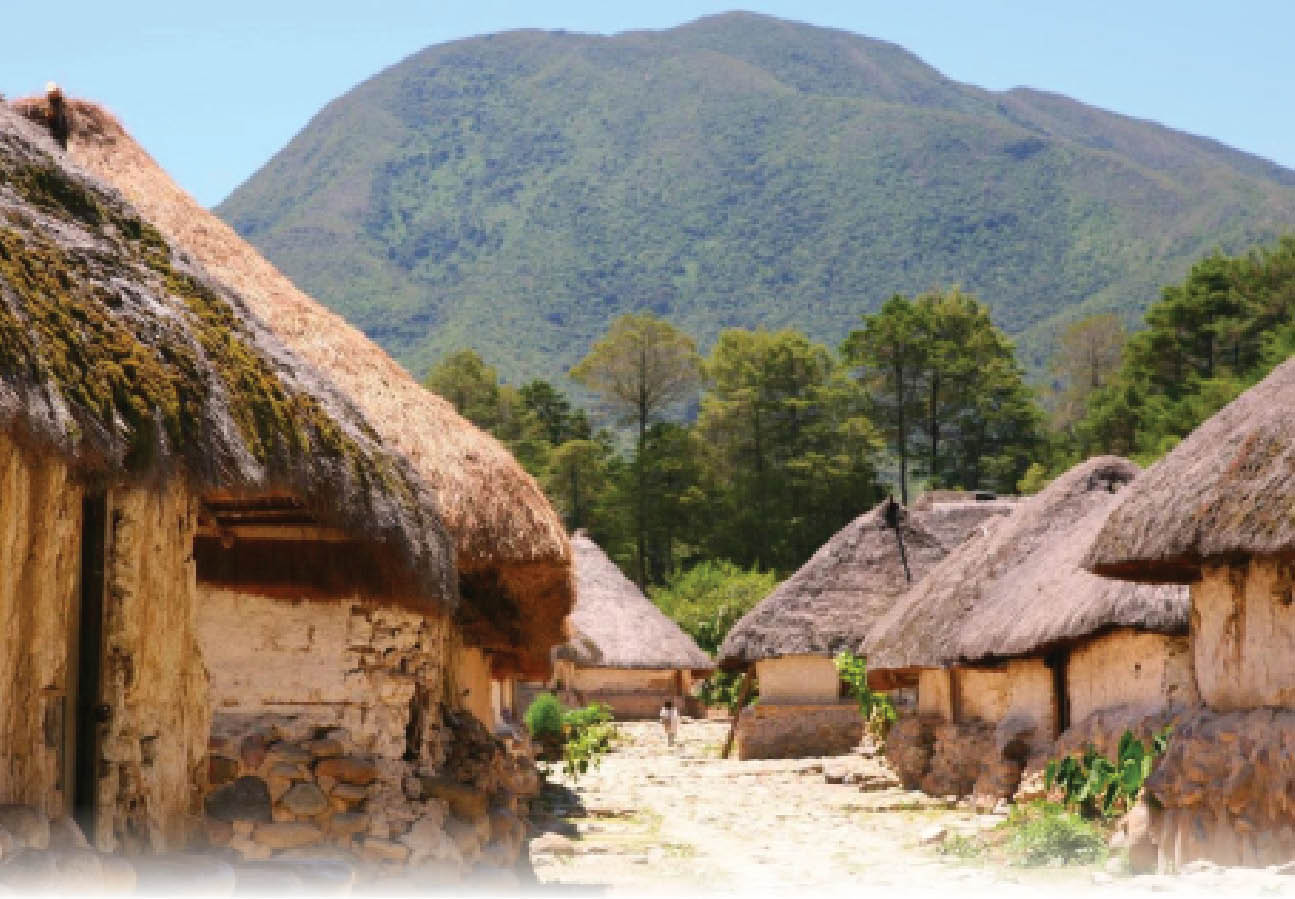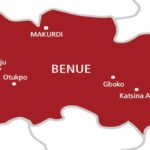Colombia’s Arhuaco indigenous tribe has emerged from centuries of isolation to help save the world from climate change.
“The Younger Brother is damaging the world. He is on the path to destruction. He must understand and change his ways, or the world will die,” Luis Guillermo Izquierdo lamented as he walked beside me, his cheeks swollen with a wad of coca leaves that he slowly masticated.
Ritual flute music drifted through the forest from some unseen source as Izquierdo – a mamo, or enlightened spiritual leader, of Colombia’s Arhuaco indigenous people – led me to the sacred natural pool Pozo de Yaya for a ritual cleansing. He removed his sandals, lowered himself onto a rock and sat cross-legged beside a fast-running stream. Izquierdo bade me remove my shoes and step into the water. Then he handed me a piece of thread representing the umbilical cord tethering me to Mother Earth, and in a warbling falsetto told me to pour my thoughts into the thread.
Hair as thick and whorled as a flokati rug flooded over Izquierdo’s shoulders from beneath a woven white conical hat, worn in reverence to the snow-capped peaks of the sacred Sierra Nevada de Santa Marta mountains. He was dressed in thick, snow-white trousers and a matching serape (shawl) of maguey fibre, tied by a belt at the waist. He reminded me of a Star Wars Jedi ¬- a wise member of the noble protective order capable by mental training of tapping into the metaphysical ‘Force’ in search of peaceful and righteous solutions. The metaphor seemed appropriate.
“We want the Younger Brothers to know more about our culture. In that way we can stop him destroying the world,” said Izquierdo, referring to the modern world beyond the realm of the Arhuaco.
The Arhuaco are (with the neighbouring Kogi and Wiwa, or Malayo) one of three virtually indistinguishable remnant groups of the ancient and advanced Tairona civilisation. Brutally subjugated by Spanish conquistadors in the 16th Century, the survivors retreated into the pyramidal Sierra Nevada de Santa Marta that explode upwards from the Caribbean coast of Colombia. Their homeland – the world’s highest coastal mountain range – comprises every distinct climatic ecosystem in Colombia, from coastal wetlands and equatorial rainforest to alpine tundra and glacial peaks. Declared by Unesco in 1979 as a Biosphere Reserve of Man and Humanity, the mountain range was named as the most irreplaceable ecosystem on Earth by Science journal in 2013.

The Arhuaco-Kogi-Wiwa community (pop. about 90,000, according to non-profit organisation Cultural Survival) is one of the world’s last uncorrupted indigenous civilisations to have survived culturally intact since the time of the Aztecs and Incas. They call themselves the ‘Elder Brothers’, are ruled by a mamo priesthood and maintain an ancient cosmovision (a conscious, cognitive interpretation of the world) based on a worship and custodianship of Mother Nature.
The mamos believe themselves uniquely possessed of a mystical wisdom. Much like how the Tibetan Dalai Lama was trained from toddler age to understand the meaning of life and help others achieve enlightenment, Izquierdo, like fellow mamos, spent his entire youth in intense spiritual training. Chosen by divination and sequestered for 18 years from birth to adulthood within dark confines near the summit of the Sierra Nevada de Santa Marta, they’re inculturated in their societal values until they master a cosmic consciousness that they believe permits them to commune with the planet directly. “They learn to work as hidden-spirit midwives to all life, keeping it in balance,” explained Alan Ereira, a documentary filmmaker and founder of the Tairona Heritage Trust.
“The thoughts of our ancestors are embedded in every rock and other element in which humans have contact,” said Izquierdo, who holds to Arhuaco belief that we exist in a conscious universe where all material things have life and awareness. It’s unfathomable to them that ‘modern man’ does not believe the Earth consciously experiences the harm we inflict on it.
“They cannot understand why it is that we do what we do to the Earth,” said Wade Davis, an anthropologist and former National Geographic Explorer-in-Residence who spent many years studying and living among the Arhuaco.
Surrounded by almost impassable jungle (and in recent decades caught in the crossfire between the Colombian Army, Farc guerrillas and right-wing paramilitaries), this ‘lost’ indigenous people lived for five centuries in almost complete isolation and obscurity, steadfastly guarding their territory against outside intrusion. Despite this isolation, their consciousness and cosmovision charges them with the responsibility of maintaining the harmony of nature and the universe on behalf of all mankind.
Three decades ago, the Arhuaco realised that the sacred Sierra Nevada de Santa Marta snow caps ¬- for them, the literal heart of the world – were melting. The páramos (high-altitude savanna) were drying up. Amphibians and butterflies were disappearing. In 1987, concerned that climate change was impacting the cosmos, the Arhuaco came out of centuries of isolation to send us, their ‘Younger Brothers’, a message. They established Organización Indígena Gonawindua Tayrona to represent the community at a governmental level, and invited Ereira to film From the Heart of the World: The Elder Brothers’ Warning.

But their aching exhortation of ecological disharmony and potential disaster fell on deaf ears. Two decades later, they called Ereira back to make a sequel: Aluna. “They had to do better, driven by fear of what they see will happen next,” Ereira said.
As the world accelerates towards calamity, the Arhuaco’s self-awareness as wards for the Earth’s ecological welfare has taken on a sense of urgency.
While in Bogotá researching a National Geographic guidebook to Colombia, I was introduced to Arhuaco political representative (and future Senate candidate) Danilo Villafañe Torres. Known as ‘El Canciller’ (the Chancellor) and ‘Gran Hermano’ (Big Brother), Villafañe inherited the mantle of tribal leader at age 23 from his father, Adalberto, who was killed in 1996 by drug traffickers for opposing illegal coca plantations on Arhuaco land. Villafañe invited me to visit the ‘heart of the world’ in the care of Izquierdo.
“Brother Christopher is here to share our message with the Younger Brothers,” Izquierdo said to the border guard. He dipped his hand into a beautifully hand-woven zijew (shoulder bag) and withdrew a handful of coca leaves. The guard did the same. They exchanged leaves as a symbol of sharing and goodwill.
We were attempting to enter the Resguardo Arhuaco. Occupying a vast tract of land on the southern slopes of the Sierra Nevada de Santa Marta, the community’s autonomous territory was granted legal recognition by the Colombian government in 1983. (The Kogi occupy their own resguardo on the northern slopes; the Wiwa, to the south-east.)
The sullen guard scrutinised me with disdain.
Izquierdo – known by the honorific Mamo Menjavi – spoke again, more authoritatively. I heard the words ‘National Geographic’. At that, the custodian smiled, and the massive gates swung open, creaking on their rusting hinges.
The ravine-slashed, boulder-strewn drive up the mountain from the village of Pueblo Bello would have challenged a goat. Few vehicles ever make this journey into the heart of the Sierra Nevada de Santa Marta. I felt honoured. Permission for bunachis (outsiders) to visit Nabusimake, the ‘capital’ of the Arhuaco resguardo, is rarely given. To be allowed entry to Nabusimake’s sacred walled inner sanctum is almost unheard of. ‘The entrance of non-indigenous is prohibited’ reads a sign above the thatch-topped entrance gate. For the lucky few who make it inside, photography is forbidden.

But the mamos held council the evening of my arrival and granted me permission to enter. The next day, I clambered up a narrow ladder beside the gate to photograph the hallowed hamlet, nestled in a small pine-scented plateau cusped by a mountain meniscus.
Huddled together against a rough mud-and-stone wall, three teenage girls giggled nervously, unsure whether to pose or flee. Younger children scattered. Women withdrew at my approach. The men – aloof, expressionless and haughtily proud – avoided eye contact, impervious to my presence as I walked a cobblestone thread between worlds. They eased past, mysterious as ghosts. Several wore cowboy hats and other sartorial accoutrements that set off their white Arhuaco attire.
Izquierdo smiled serenely. By contrast, he seemed pleased by my presence.
Indefatigable and inspired, the self-assured mamo is at the forefront of a third wave of Arhuaco initiatives that represent a huge leap beyond the unheeded warnings from their mountain refuge. Izquierdo champions opening up the resguardo for ethno-tourism and autonomous economic empowerment, such as the sale of Arhuaco crafts to the Younger Brothers.
Since 1995, various Arhuaco communities have organised themselves into cooperatives to produce and sell export-quality organic coffee. But as climate change pushes coffee production to cooler, higher mountain slopes, they’re now working to supplement coffee earnings with those from selling cacao. And as spiritual leader for Puerto Bello (the gateway village at the base of the mountains), Izquierdo has promoted the cultivation of sugarcane locally to produce panela (unrefined, organic raw brown sugar) for export.
“The idea is also to let the world know more about our culture,” Izquierdo said. “We want to carry the message that it is not simply to cultivate, but to cultivate with conscience,” he added, referring to organic farming, without harmful pesticides and other inputs, in harmony with Mother Nature.
By integrating into the cash economy, the Arhuaco are gaining cultural recognition while deriving income to buy back, parcel by parcel, ancestral territory owned by Younger Brothers, Izquierdo explained. The ultimate goal is for the Arhuaco to control more than 190,000 hectares (almost half a million acres), reconstituting ancestral territories like a rombacabeza (jigsaw puzzle), piece by piece.

I watched, fascinated, as Izquierdo moistened a wooden stick with saliva and dipped it into a poporo (a gourd filled with lime from powdered seashells), a carry-over from pre-Columbian civilisation. Izquierdo extracted some lime, wiped it on a wad of coca leaves to enhance the coca’s stimulating effect, and stuffed the wad in his mouth.
The thick limescale, the hard residue that builds by incremental degree with each wipe around the rim of the gourd, is a living library of every thought underlying every stroke of the stick. For the Arhuaco, an individual’s every thought or dream is literally recorded by the metaphorical action of poporeando (dipping into the poporo). “We write our thoughts with it. It’s a record of a man’s entire life,” Izquierdo said.
Equally, every knot in their intricately crafted zijews and clothing represents a thought or memory. I watched men perched on low wooden stools weaving cloth on ancient looms, deep in concentration as their deft fingers wove together the material world with that of spirit.
Every aspect of Arhuaco life is permeated with the symbolism of weaving. “Their central metaphor is a loom,” Davis said. The Sierra Nevada de Santa Marta is the very spindle from which the all-knowing Mother’s thread unwinds, turning possibility into reality, dreams and memory. The power of embedded thought is the very weft to the warp of their cosmovision.
Suddenly the meaning of the maguey thread that Izquierdo had handed me became clear. My experience with the Arhuaco was indelibly printed in that metaphorical umbilical cord. A cord uniting the past and present, the spiritual and material worlds, and my understanding – my thoughts, dreams and memory – of the Arhuaco’s cosmovision to be shared with the world.
Source: BBC

 Join Daily Trust WhatsApp Community For Quick Access To News and Happenings Around You.
Join Daily Trust WhatsApp Community For Quick Access To News and Happenings Around You.


